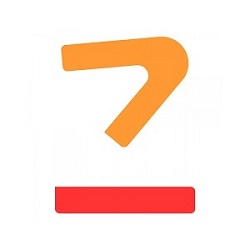Building an NFT marketplace
- Created at:
- Updated at:
No doubt, NFTs (non-fungible tokens) are leading the modern digital marketplace. Everyone, including investors, creators, and artists has been trading digital assets like NFTs. But what is the cost of building this marketplace? Stay tuned as we discuss the same in this blog. Also, we have highlighted some important features of the NFT marketplace’s evolution.
NFTs are unique digital assets or products that can be traded only on unique platforms called marketplaces. Interested buyers can reach out to these marketplaces and buy these digital products using cryptocurrencies such as Ethereum and Bitcoin. In layman's language, the NFT marketplace development company develops a platform to trade NFTs.
Types of NFT platforms
NFT platform is classified into two types:
1. Niche peer-to-peer marketplaces: Also referred to as p2p marketplace, this is the type of marketplace where assets belonging to a particular category are traded.
Examples: Valuables (buying and selling of tweets) and Glass Factory (buying and selling of digital holograms).
2. Universal non-fungible websites: Unlike the p2p marketplace, anyone can sell any kind of crypto assets, ranging from digital art to domain here.
Examples: Rarible, OpenSea, Mintable, etc.
- Top NFT marketplace platforms
The way NFT marketplace development is gaining popularity, no wonder it will be a huge market shortly, resulting in heavy buying and selling. Some of the leading NFT marketplaces for the year 2021 are listed below:
OpenSea: It is one of the biggest NFT marketplaces that allows its users to trade digital collectibles and various other blockchain-supported assets.
Rarible: It is a distributed network developed on Ethereum, hence it allows trade by eliminating the middlemen. It gives digital artists a platform to monetize their art.
SuperRare: Like others, this is a marketplace where you can buy/sell digital assets, but what makes it different is that each artwork on this platform is authenticated by a network artist.
Working of an NFT marketplace
Simply described, NFTs run on smart contracts. Whenever an NFT is issued by an NFT token development company, the unique information that it contains is recorded in the blockchain for immutability.
Below is the common user flow of all NFT marketplaces:
- User signs up on an NFT platform.
- User sets up a crypto wallet.
- User uploads digital assets to showcase their work.
- The uploaded items are then displayed for sale.
- Assets overcome moderation.
- Once the NFTs are approved, buyers can find them on the list for sale.
- The user starts accepting bids.
As soon as the auction starts, the buyer gets notified about the top bids. The NFT marketplace platform regulates the transactions of digital assets
Building your own NFT marketplace
To start with, it is advisable to break the entire process into small stages. Below are the steps to create an NFT marketplace.
- Define the niche
The first step is to make users aware of the current market trends.
- Define app panels
Panels, a set of tools to manage mobile applications, are created based on app users. In the NFT marketplace, there are three different types of app users:
Buyers: one looking to buy digital artwork
Sellers: one creating and designing digital artwork
Administrators: one responsible for managing and running the NFT marketplace
- Documentation
This is the most critical component of application development. It involves: defining functional and non-functional requirements; deciding on user flow, features, quality aspects, etc. In short, it defines software architecture by encompassing the app’s various use cases and functionalities.
Furthermore, developers cannot remember all the requirements and clients’ expectations. Documentation helps in creating a solution for all existing requirements and potential problems with the functionalities. To summarize, effective documentation helps in the successful development of an application.
- App Prototyping
In today’s modern digital world, delivering just an efficient product is not enough. App users want an experience, rather than just functional products and services. This is when UI/UX comes into play. Developers should not code the app until the client is satisfied with the prototype designs as look and feel matter more than ever now.
- Development Stage
In this step, the owner decides the suitable framework for the project. The functional requirements (documented earlier) are implemented in this step. Also, the quality requirements are met at this stage.
- Implement Token Generators
Token generators, a self-executing contracts with a specific set of terms and conditions upon which buyers and sellers agree mutually.
- Test and Execute
This is a very crucial step as dreams are converted into reality. The main purpose of testing the app is to ensure that it is secure, reliable, and offers high performance.
Cost of developing an NFT platform
Here comes the answer to the most interesting question i.e., the cost of NFT development services (non-fungible token development services). The amount varies according to the platform functionality. A complex platform with dynamic features will require more investment as compared to ready-made solutions.
On average, NFT marketplace development costs around $16,000, equivalent to 58,020 Indian rupees.
Codezeros is Blockchain service provider company.
Popular posts
-
6 Clever Hacks to Skyrocket Your Mobile Organic Search Traffic
- 1
- 0
-
Why You Should Choose Ionic Framework for Mobile App Development
- 1
- 1
-
Is Flutter Likely to Replace Java for Android App Development?
- 0
- 0
-
How to block ads on YouTube (video)
- 0
- 0
-
13 Best Employee Management Software Tools for Small Businesses
- 5
- 0
-
Kids and gadgets: friends or foes?
- 1
- 0
